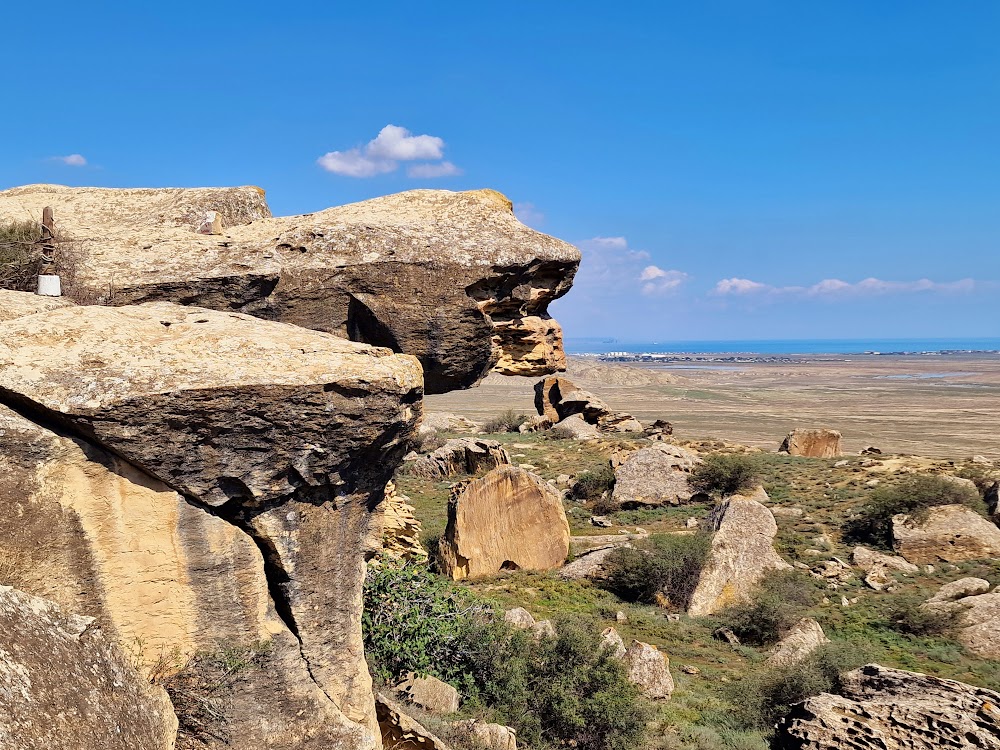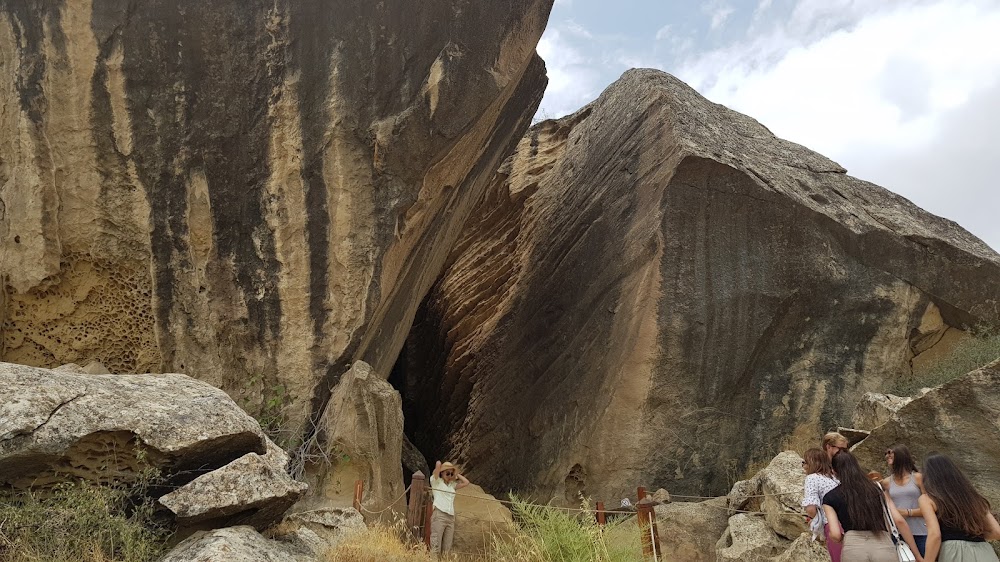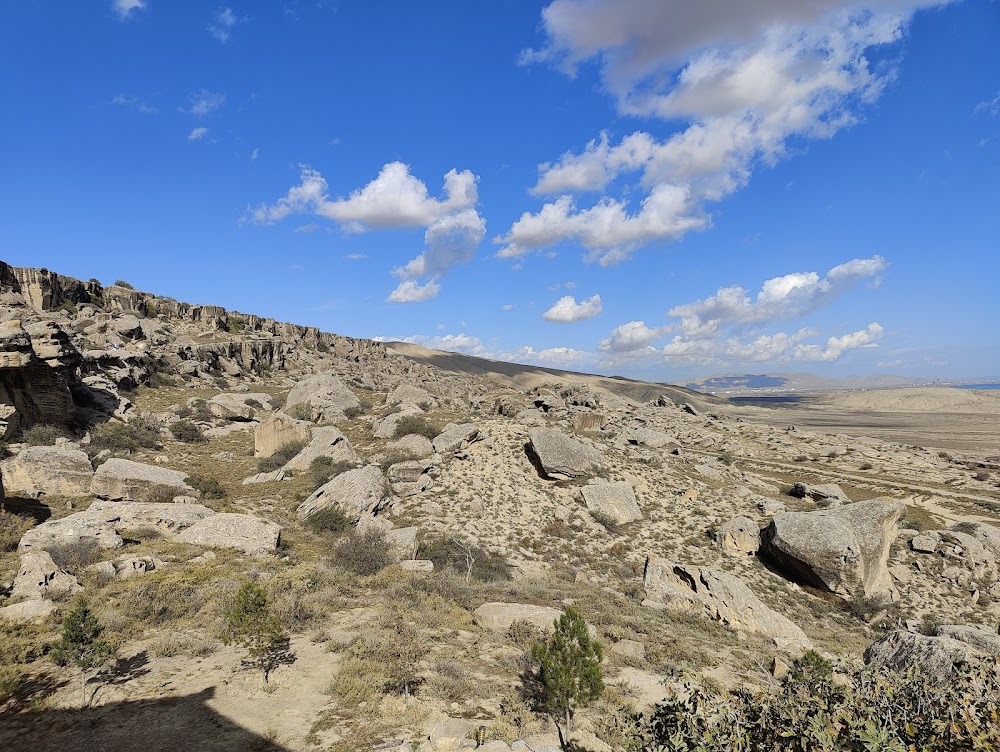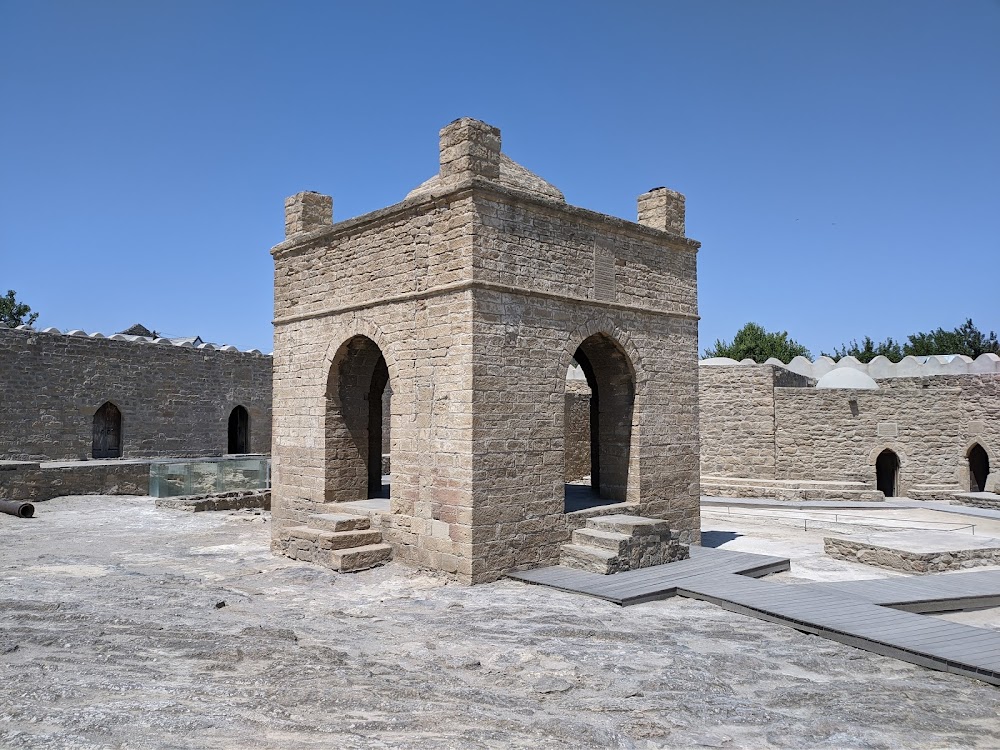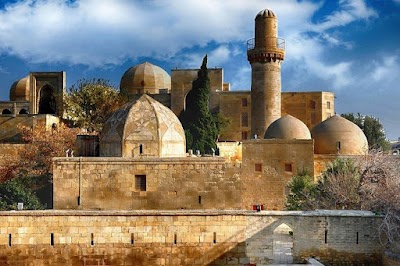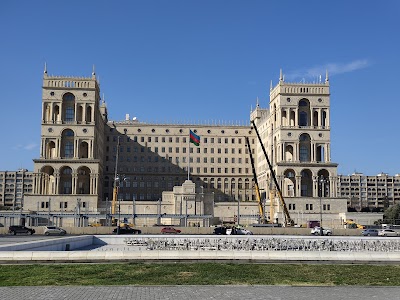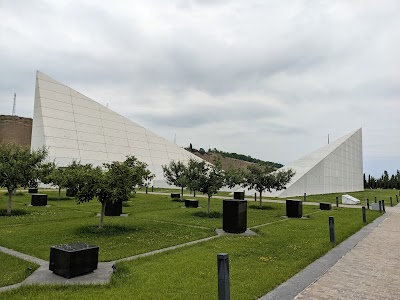Gobustan Rock Art Cultural Landscape (Qobustan Qayaüstü İncəsənət Yeri)
Overview
Around 60 kilometers southwest of Baku, the captivating Gobustan Rock Art Cultural Landscape is nestled within the semi-desert region of central Azerbaijan. This remarkable site features an extraordinary collection of over 6,000 rock engravings, some dating back an astonishing 40,000 years, offering a rich glimpse into prehistoric life and cultural evolution.
The significance of Gobustan was first recognized in 1939 when quarry workers accidentally discovered some of these ancient carvings. Subsequent research and excavations unveiled not just the engravings, but also ancient habitats, burial sites, and other archaeological relics, showcasing continuous human settlement in this area from the Upper Paleolithic to the Middle Ages.
These ancient carvings are etched into the walls of caves, boulders, and rock formations scattered throughout Gobustan National Park, effectively transforming the landscape into an open-air gallery that narrates the transition from the Stone Age to the Iron Age. The petroglyphs depict a wide range of themes, including scenes of hunting, dancing, rituals, and daily life, as well as symbolic shapes that represent a form of prehistoric communication.
Creating these rock carvings was a meticulous endeavor. Early humans wielded sharp tools made from flint, quartzite, and other hard stones, chipping away layer by layer to form intricate designs and figures. This advanced technique highlights the keen observational skills and artistic vision of early humans, showcasing their ability to represent their world creatively.
Among the most intriguing artworks are the depictions of primitive dance rituals, which inspired the name "Gobustan." The name derives from the Azerbaijani words "gobu," meaning a dry river valley, and "stan," meaning place or land. These dance scenes are believed to illustrate ancient rites and communal gatherings, providing insight into the social and religious practices of early societies.
In addition to the rock carvings, the Gobustan Rock Art Cultural Landscape features ancient structures such as kurgans (burial mounds), defensive walls, and remnants of stone dwellings. Archaeologists have uncovered tools, pottery shards, and even primitive musical instruments like the tambourine stone, one of the earliest musical artifacts known. These discoveries contribute to a deeper understanding of how these ancient people lived, worked, and interacted with their environment.
The unique climate and geology of the region have played a crucial role in preserving these petroglyphs. The dry, harsh conditions of the semi-desert have shielded the carvings from extensive erosion and weathering, while the limestone rock, rich in calcium, provided a durable surface for carving, ensuring the longevity of these ancient artworks.
In recent years, Gobustan has gained international acclaim, designated as a UNESCO World Heritage Site in 2007. The preservation of this site is now a priority for Azerbaijani authorities, who have implemented protective measures to safeguard the engravings from both natural and human-induced damage. Educational programs and cutting-edge technology, such as 3D scanning, are employed to create detailed records and virtual replicas, making the knowledge contained within this outdoor museum accessible to a wider audience.
Visitors to Gobustan today can explore the petroglyphs along marked trails with informative signage. A visitor center enhances the experience with displays of artifacts, interpretative panels, and multimedia presentations. Knowledgeable guides often lead tours, sharing insights and anecdotes that breathe life into the ancient world of Gobustan.
Gobustan stands as a powerful testament to human ingenuity and creativity, serving as an open book that reveals our ancestors' lives, aspirations, and cultural expressions. Through these silently enduring rock carvings, painted over millennia, we gain an invaluable window into the birth and evolution of human civilization within the striking landscape of Azerbaijan.



